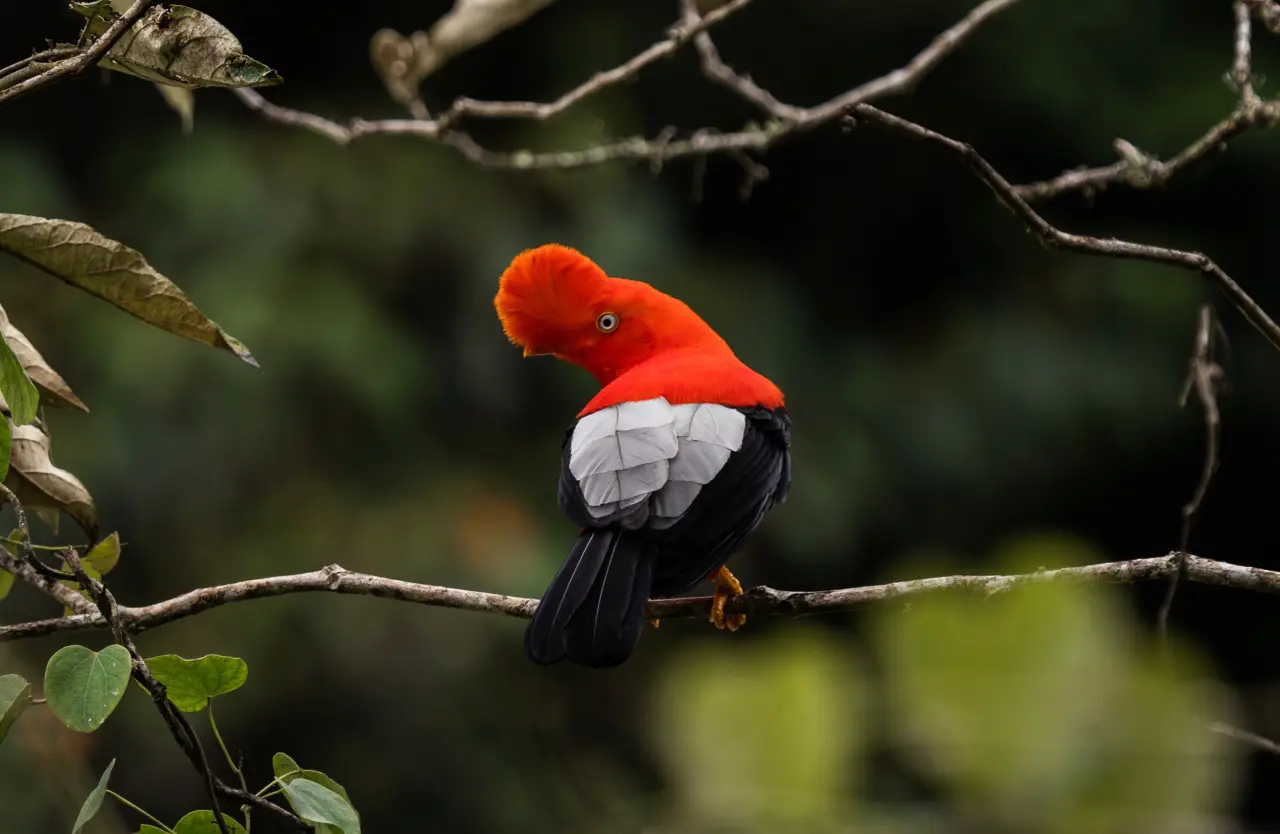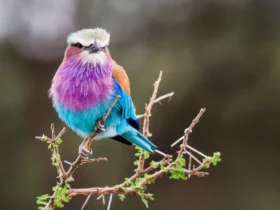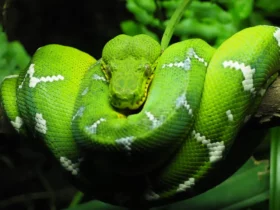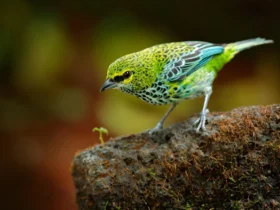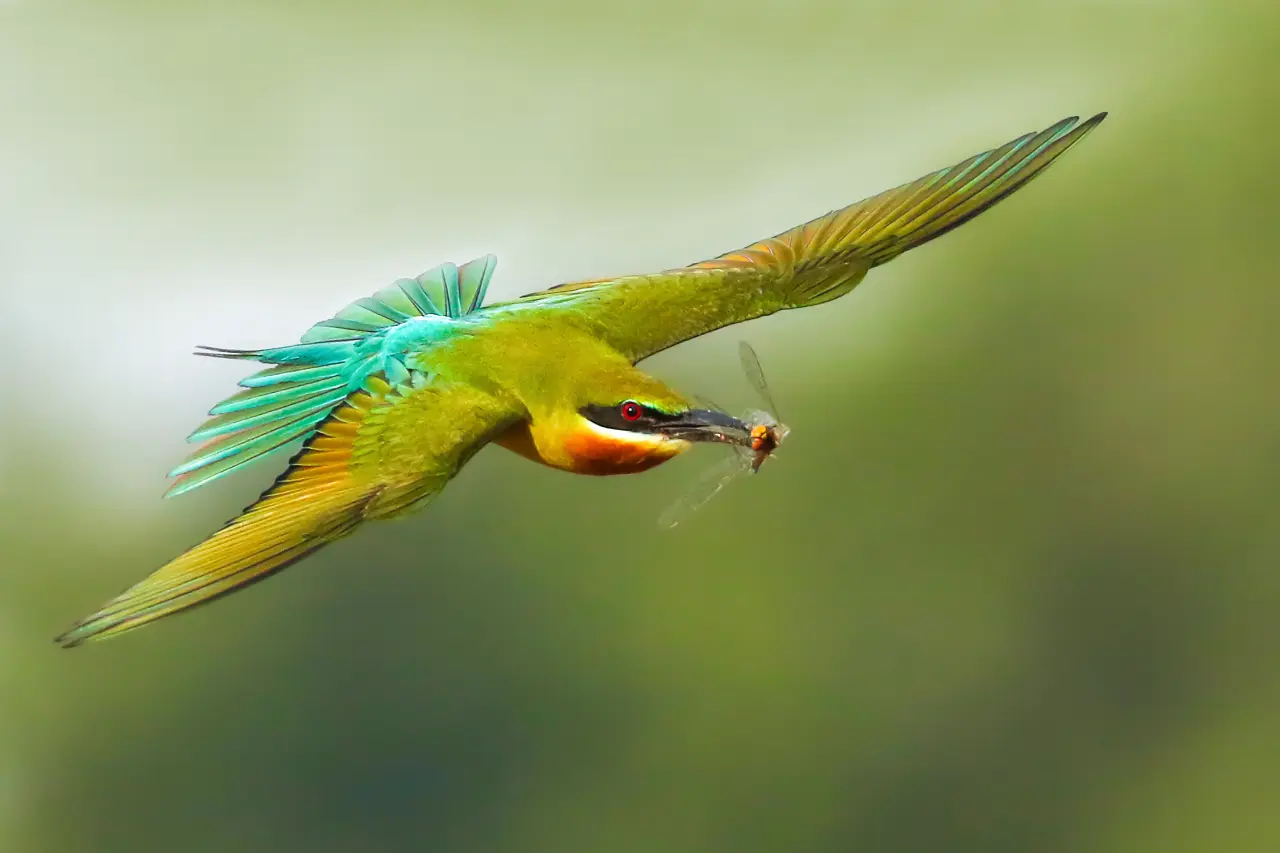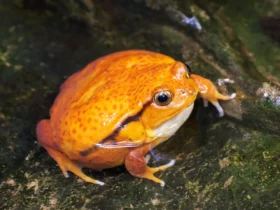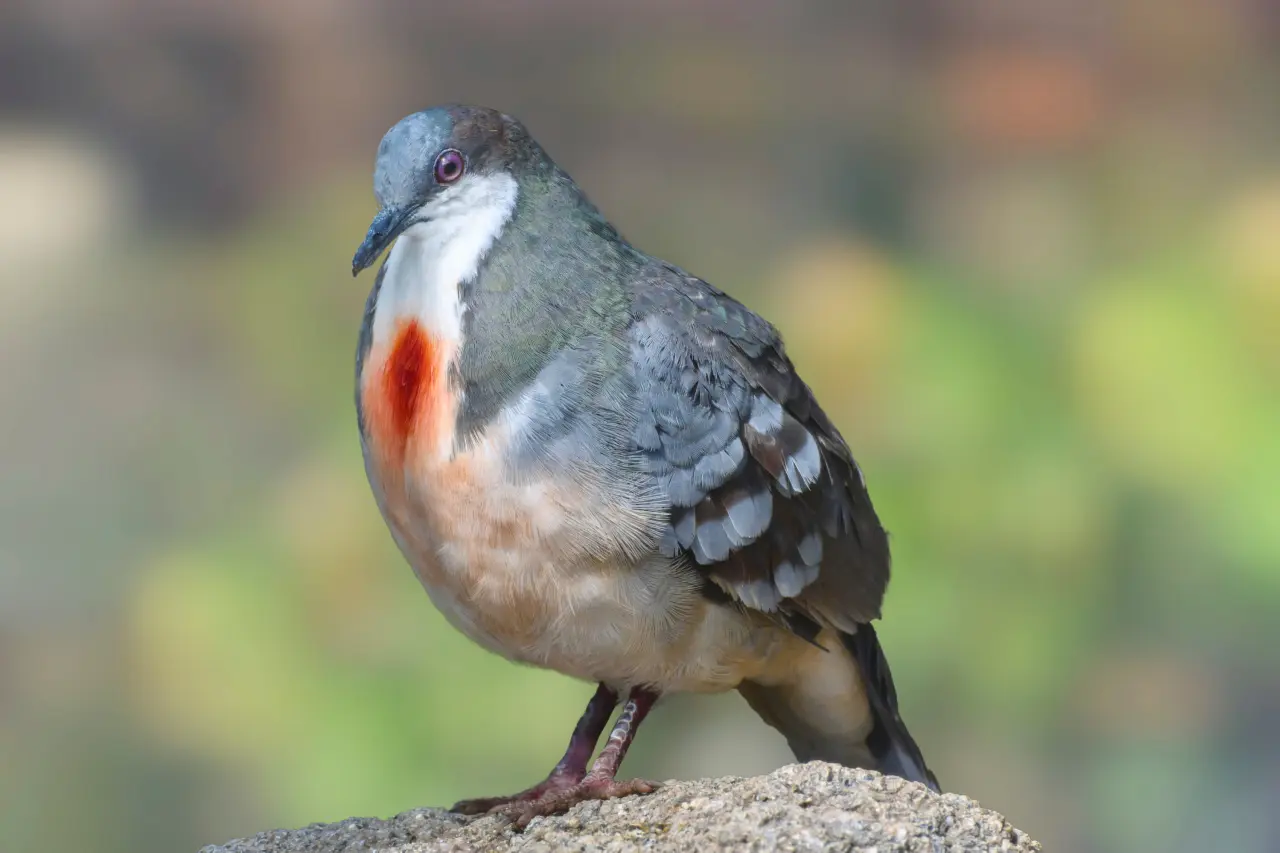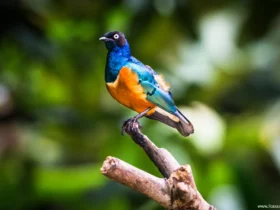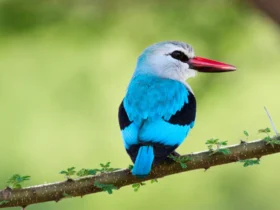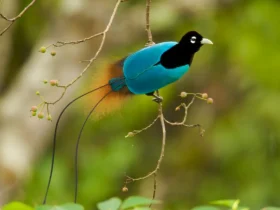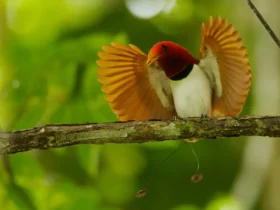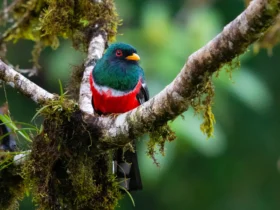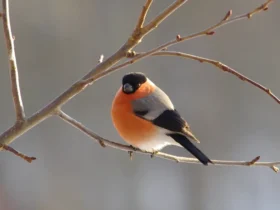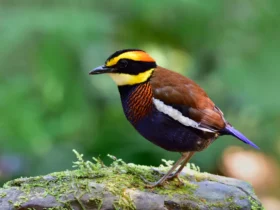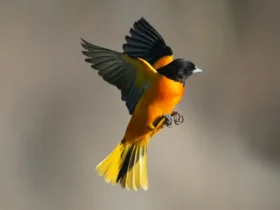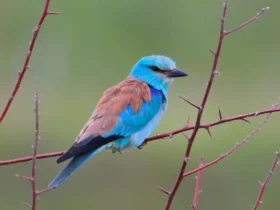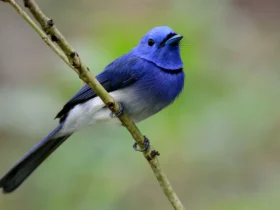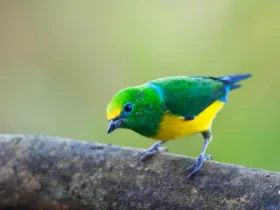In the lush, misty forests of the Andes Mountains, a strikingly vibrant bird commands attention with its flamboyant plumage and captivating displays. The Andean Cock-of-the-Rock (Rupicola peruvianus) is a fascinating species known for its remarkable beauty and unique behaviors. Found in the cloud forests of South America, this magnificent bird holds a special place in the hearts of bird enthusiasts and nature lovers alike.
Appearance and Adaptations
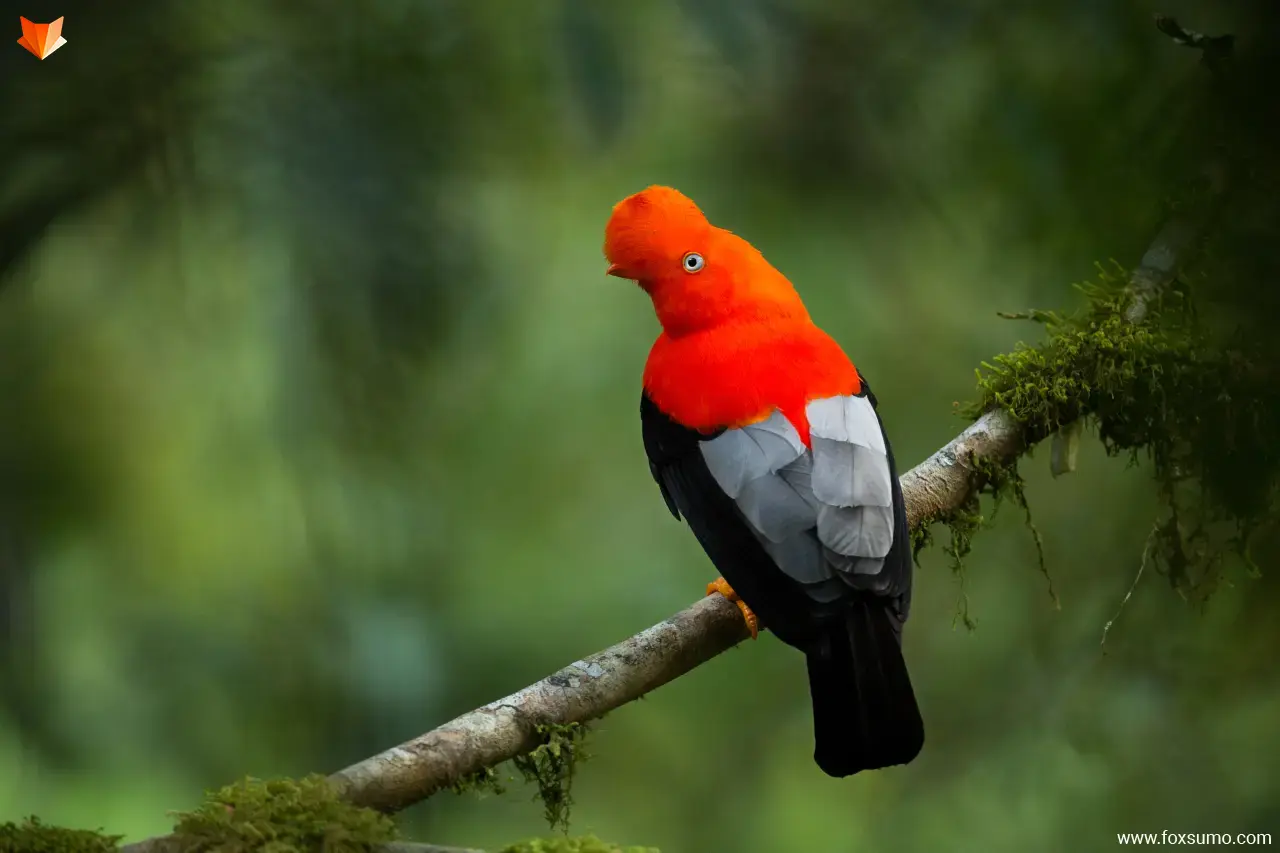
The Andean Cock-of-the-Rock is a medium-sized bird with a robust body, measuring about 32 centimeters in length. What makes this species truly remarkable is its dazzling plumage. Males boast a brilliant orange-red coloration, resembling flames, covering their entire bodies, while their heads are adorned with a prominent fan-shaped crest. In contrast, females display a more muted plumage, sporting a combination of brown and gray feathers that provide camouflage during nesting.
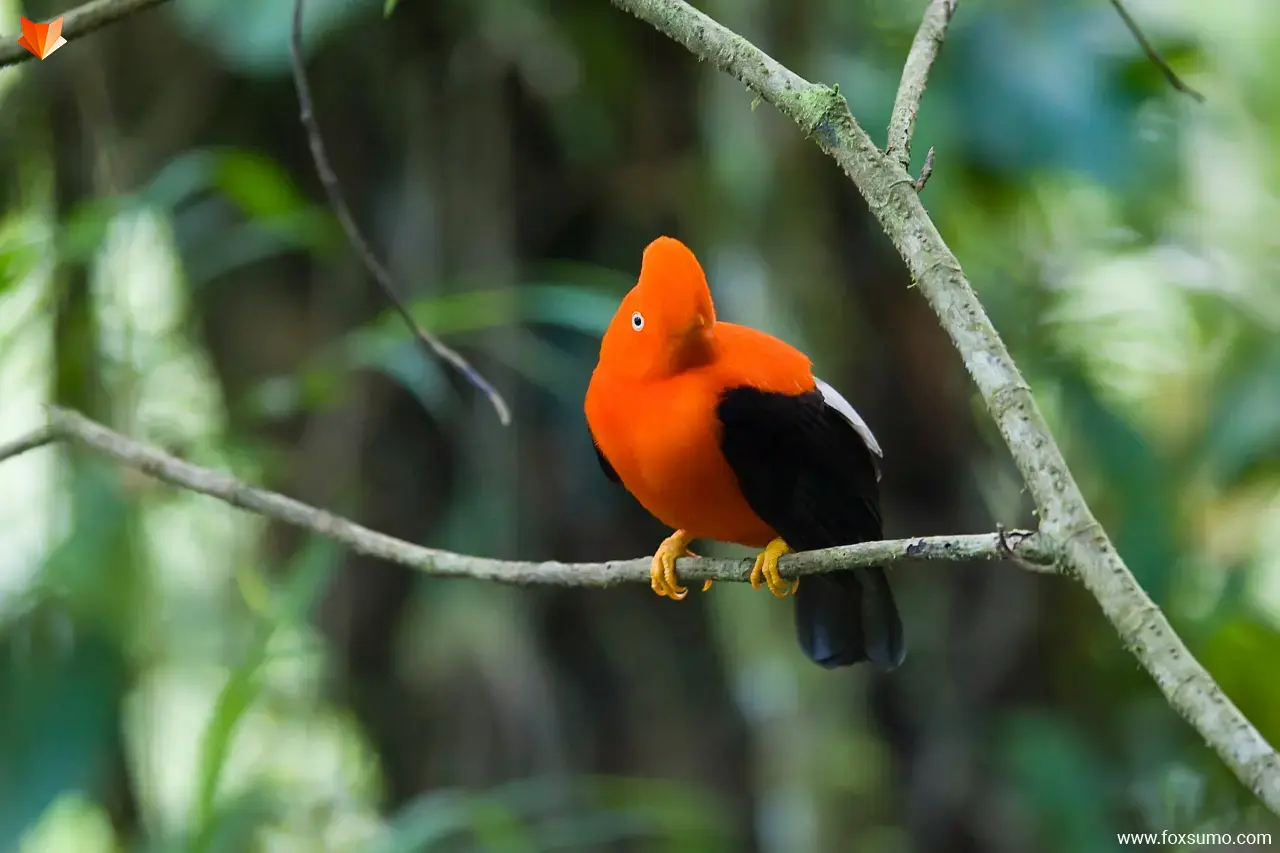
The vivid coloring of male Andean Cock-of-the-Rocks serves an important purpose: attracting mates. During the breeding season, males gather in specific locations called leks, where these colorful birds perform elaborate courtship displays to impress females. Their energetic dances, involving wing-flapping, head-bobbing, and vocalizations, create a mesmerizing spectacle for observers lucky enough to witness it.
Habitat and Distribution
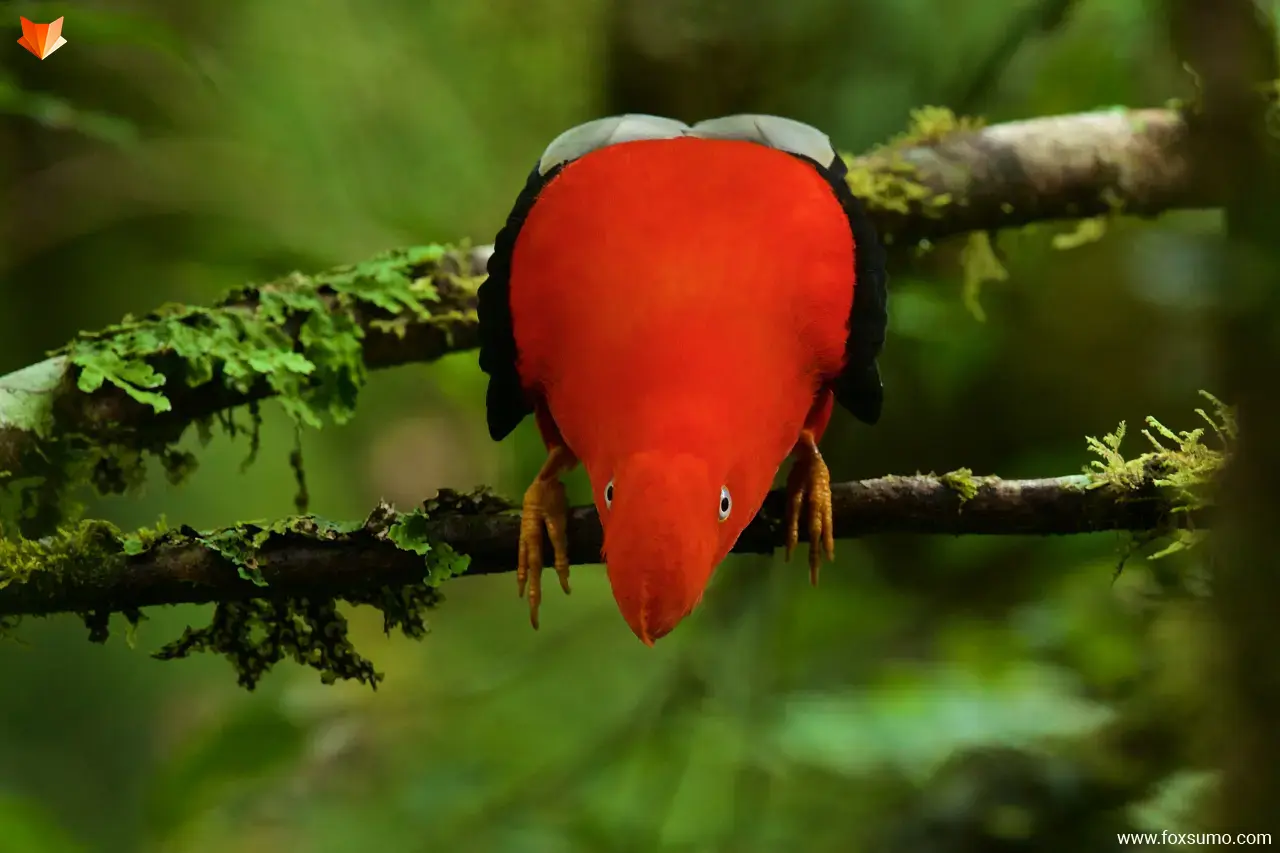
The Andean Cock-of-the-Rock is native to the cloud forests of the Andes Mountains, ranging from Venezuela to Bolivia. These forests, characterized by their high altitude and perpetual mist, provide an ideal habitat for the species. The combination of mild temperatures, abundant rainfall, and dense vegetation supports the bird’s dietary needs and offers ample nesting sites.
Behavior and Diet
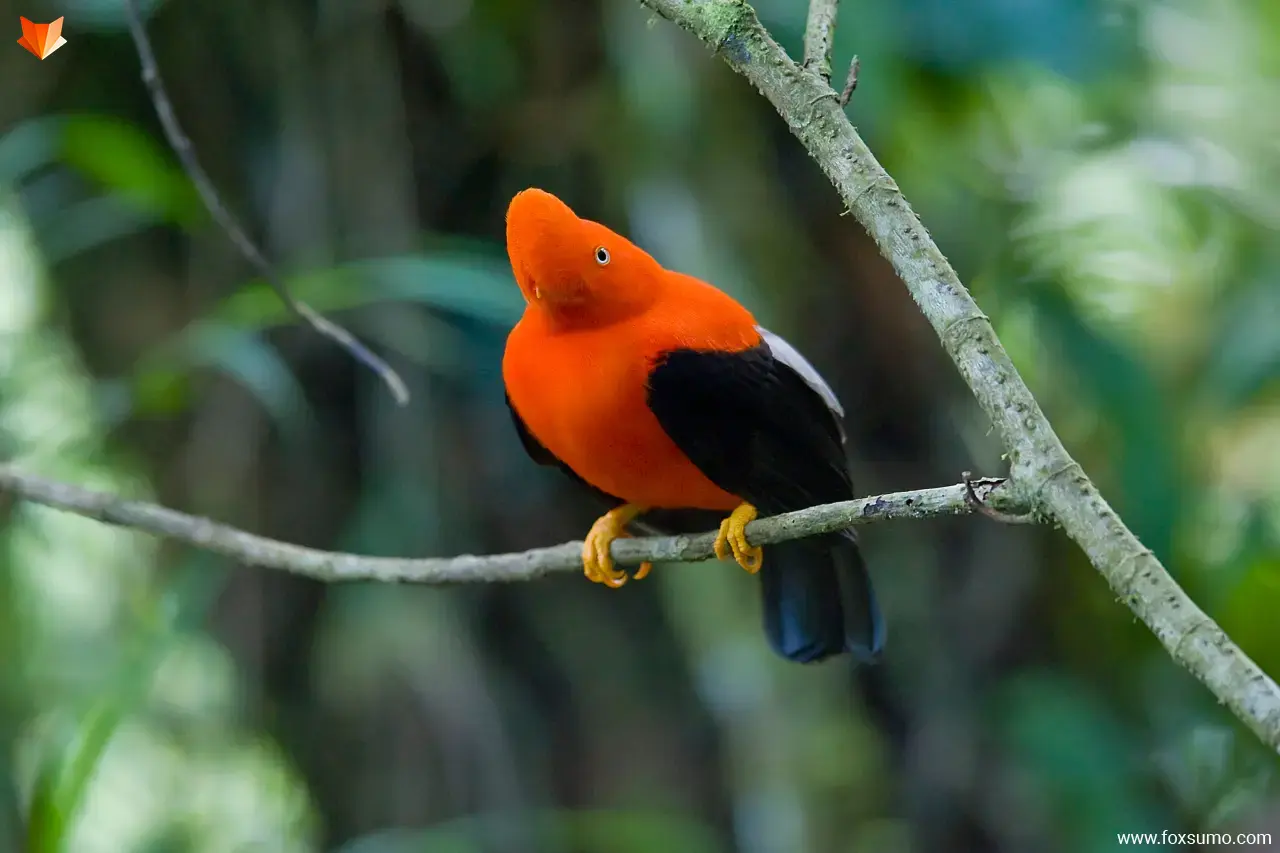
Andean Cock-of-the-Rocks are diurnal birds, meaning they are active during the day. They are primarily frugivorous, feeding on a variety of fruits and berries found in their habitat. By consuming these fruits, they also play a crucial role in seed dispersal, aiding in the regeneration of forest ecosystems.
Breeding and Nesting
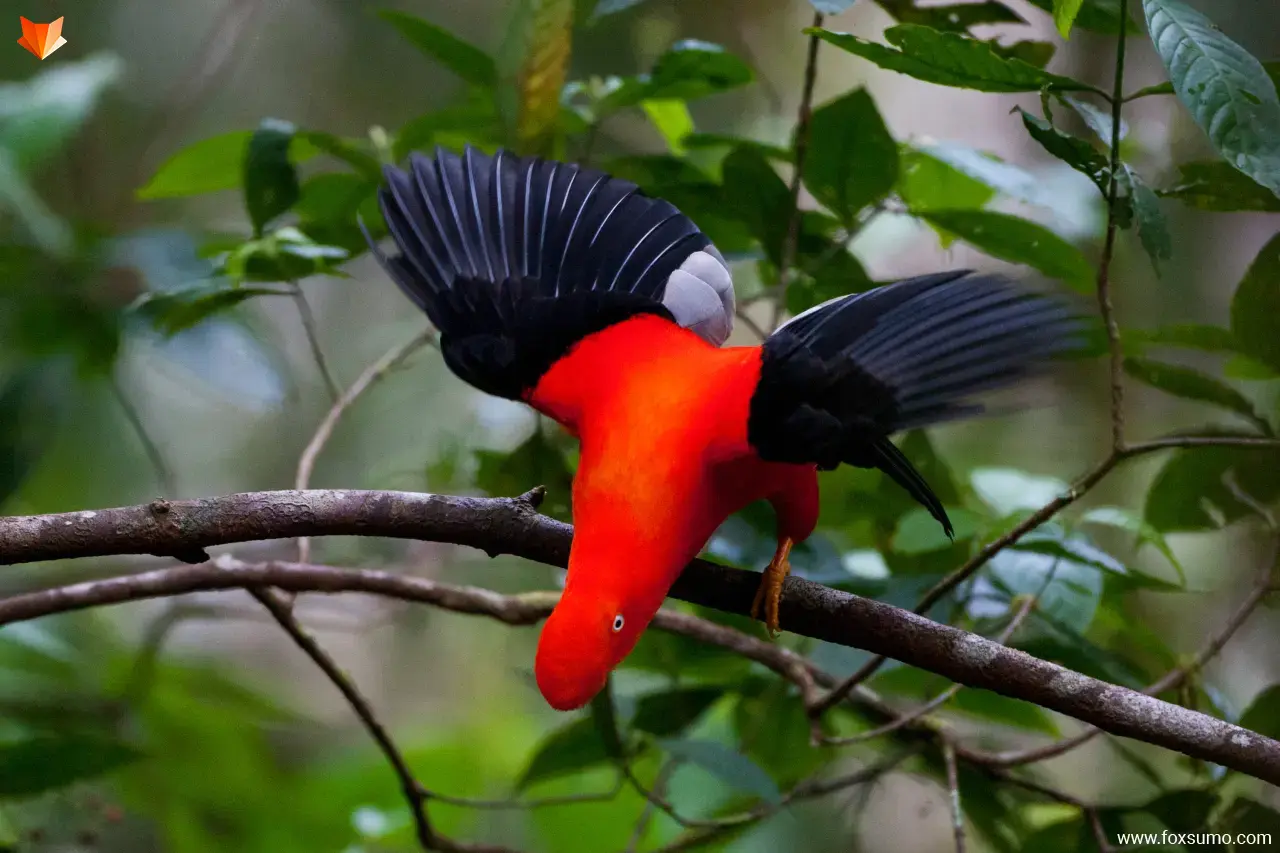
Breeding season for the Andean Cock-of-the-Rock typically occurs between March and June. During this time, male birds compete for the attention of females by displaying their vibrant plumage and performing their captivating dances in the lek. Once a pair is formed, the female selects a nesting site, usually a rocky crevice or a hole in a tree trunk. She constructs a cup-shaped nest using leaves, moss, and other plant materials, where she lays a clutch of one to three eggs. Both parents take turns incubating the eggs and caring for the hatchlings.
Conservation Status and Threats
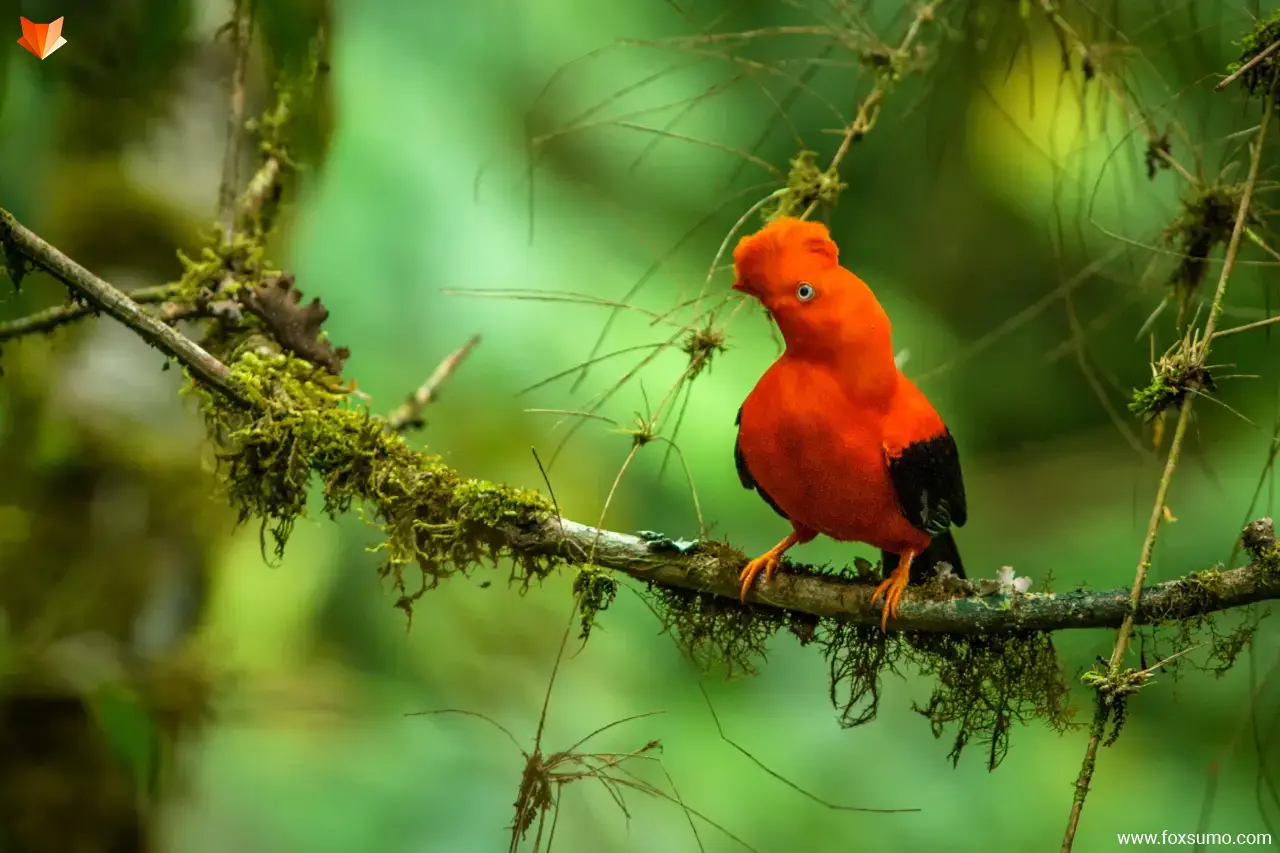
Despite its captivating allure, the Andean Cock-of-the-Rock faces several threats to its survival. Habitat loss due to deforestation and illegal logging is a significant concern. The conversion of cloud forests into agricultural lands and the construction of infrastructure pose additional challenges. Climate change and the resulting alterations in temperature and rainfall patterns also impact the bird’s habitat and food availability. Furthermore, the capture of these strange looking birds for the pet trade poses an ongoing threat to their populations.
Conservation Efforts
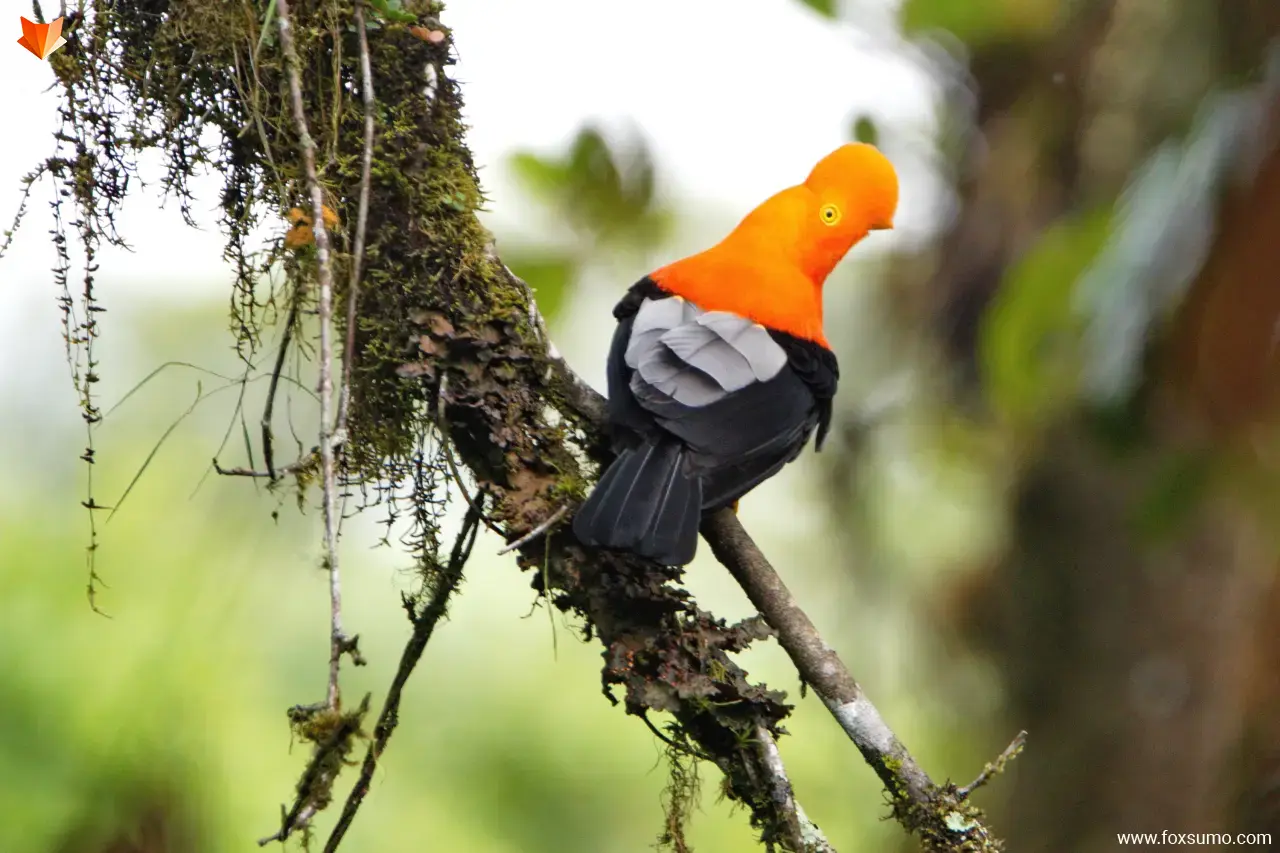
Recognizing the importance of preserving this charismatic species, various organizations and governments have implemented conservation measures. Protected areas have been established in several countries to safeguard their habitats, and initiatives promoting sustainable land-use practices have been undertaken. Raising awareness about the ecological importance of the Andean Cock-of-the-Rock and the need to protect its habitat is also a crucial step towards ensuring its long-term survival.
Final Thought
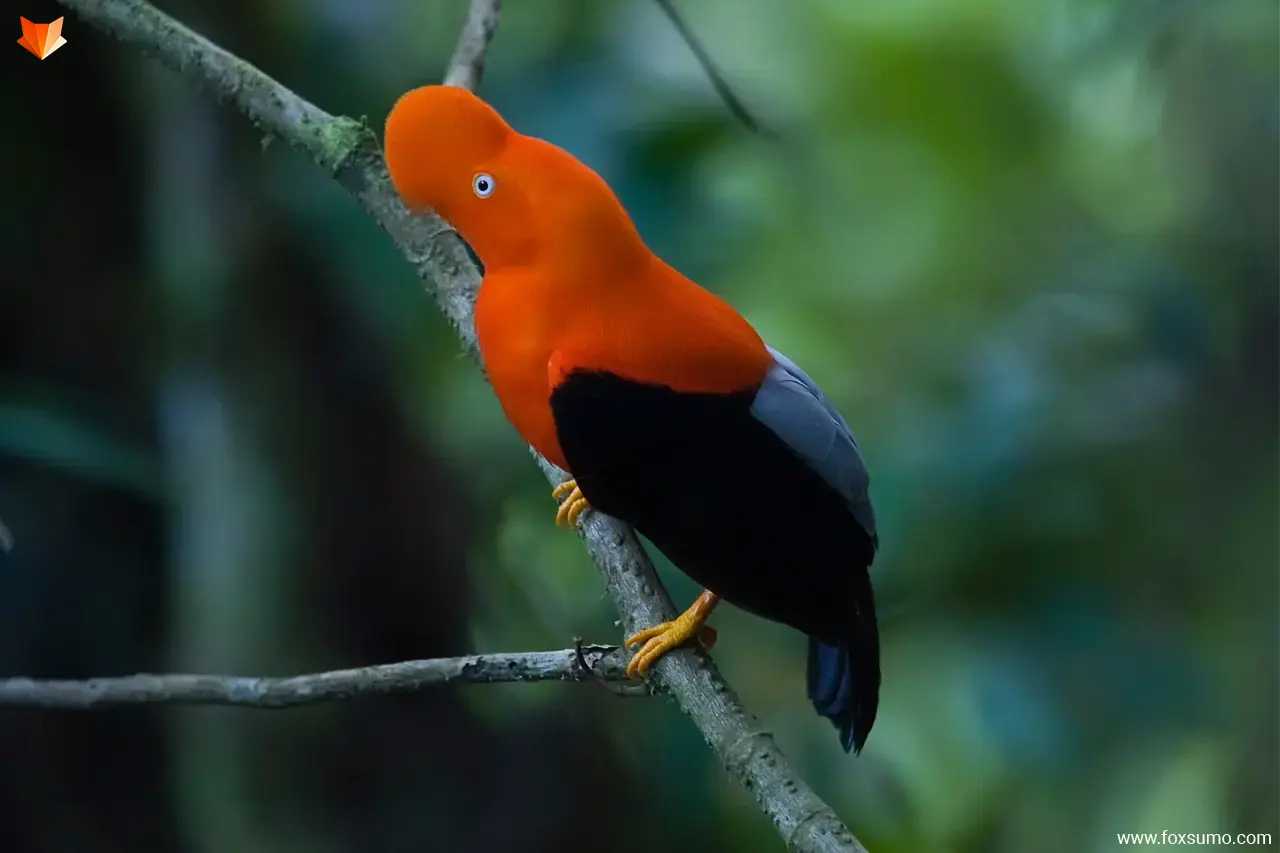
The Andean Cock-of-the-Rock, with its vibrant plumage and captivating behaviors, holds a special place in the rich biodiversity of the Andean cloud forests. Its remarkable adaptations, courtship displays, and crucial ecological role make it a symbol of the unique beauty and fragility of this ecosystem. By valuing and protecting these birds and their habitats, we contribute to the preservation of not only a remarkable species but also the diverse wonders of nature that surround us.
